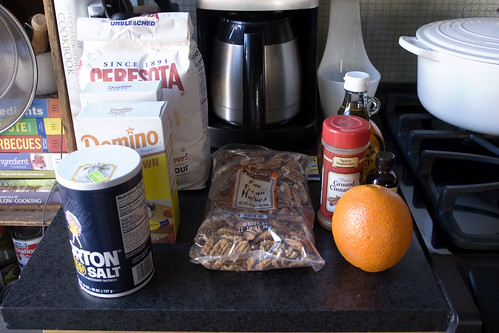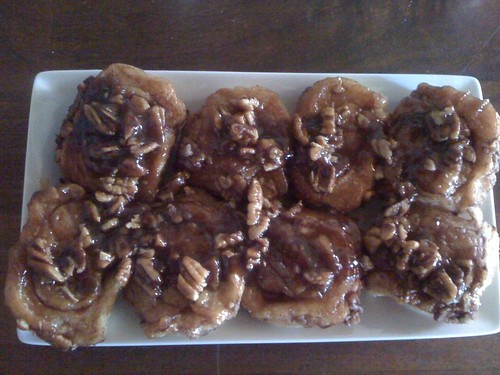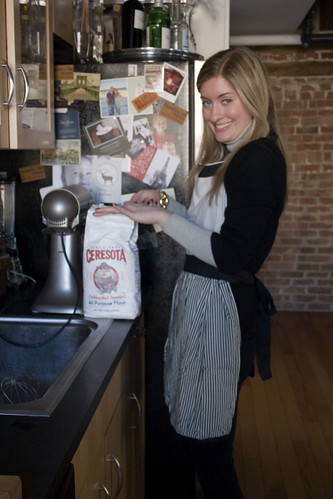So when my friend Amy, newlywed and novice baker, announced that she was going to attempt my favorite sticky bun recipe to have waiting for her husband when he returned from a weekend away, I jumped at the chance to convert a yeast-phobe to (at the very least) a yeast-liker. Full disclosure: I may also have jumped at the chance to use their brand new Kitchen Aid stand mixer.

{ingredients, ready to go}
{Amy, prooving that she did most of the work herself}
So we spent a sunny, cold afternoon in January in Amy's kitchen with the mixer and a packet of thankfully cooperative yeast. I thought I'd share the few tips I shared with Amy that day, the few things I've learned that make baking with yeast less intimidating:
- Rapid Rise Yeast: though it requires a few tweaks to most recipes (heating the liquid ingredients), they may as well call it "Never Fail Yeast." Use this to get the hang of how yeast should behave in a dough, then try the recipe with regular yeast.
- Elasticity: A lot of recipes have you knead the dough until elastic. Which means what, exactly? When you press a finger into the dough it should 1) not stick to your finger and 2) bounce back quickly. If it bounces back lazily and the dough feels somewhat hard when you poke it, keep kneading.
- Warmth: No matter the season, my apartment is never warm enough to encourage yeast to rise at a normal pace. So to help it along, I preheat the oven to a low temperature then turn it off before putting the dough in to rise.
- Moisture: Yeast likes warm, moist heat. So sometimes I'll put a pot of boiling water in the oven with the rising dough to help it along. The added moisture in the oven also helps to keep the dough from drying out.

{sticky buns, ready for their final rise}

{success!}
Amy and I did most of the work the day before she planned on baking them. The next morning she let them rise a final time before baking. Judging from the photo she sent, it looks like they turned out perfectly. And if it weren't for the photo evidence of the baking process, I'd bet you could convince her husband that a magic wand was involved.
(Pardon the dorky literary pun in the title, I couldn't resist.)


Yum! I want a sticky bun!
ReplyDeletehave you made no-knead bread in a dutch oven? my dutch oven arrives today, so i plan to make it tonight. any tips?
ReplyDeleteOoh, I haven't made it (no dutch oven). How'd it go?
ReplyDelete